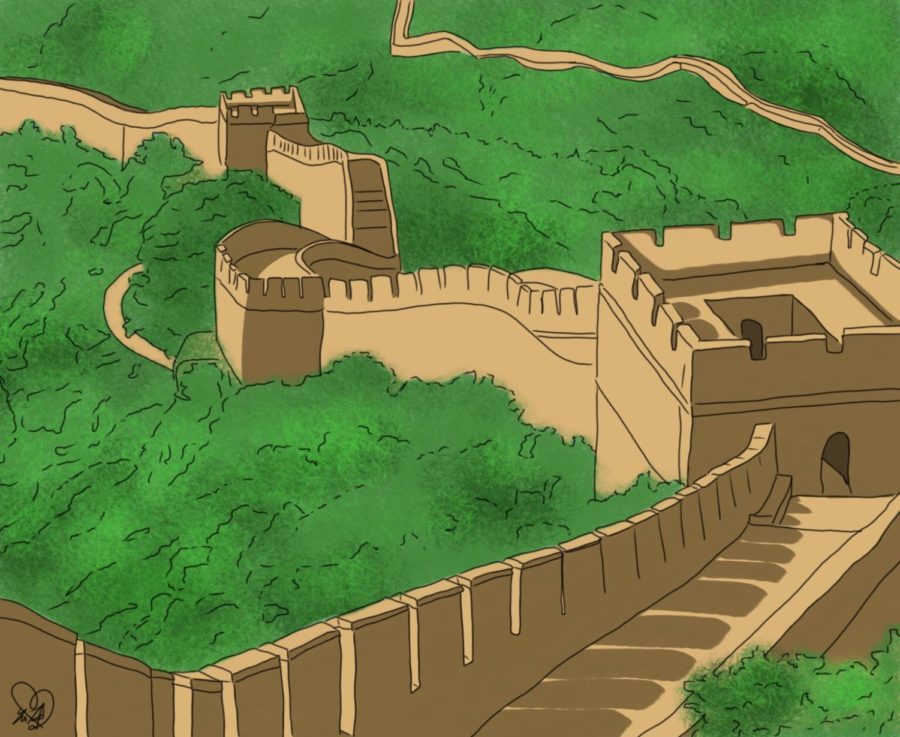Symbolism of Border Walls Through History
March 22, 2019
Many people are likely tired of hearing about Trump’s border wall and all news related to it. However, the concept of putting a barrier along a length of a country’s border is not a new idea. Leaders for millennia have erected walls with the intent of keeping people out. Whether or not it is the most effective method of fortifying a boundary is up for debate, but walls send a strong message to citizens and outsiders alike.
Stretching over one hundred and seventy miles, the Sumerians built the first ever defensive wall in the 21st century B.C., with the intent of protecting the city of Ur and keeping the Amorites from invading. The Sumerian Amorite Wall was only really effective for a few years at most, and many people walked around it or invaders easily penetrated it. Eventually, the Amorites teamed up with neighboring Elamites, and both were successful in bringing the Sumerian civilization to its downfall, its wall with it.
Other walls later popped up around cities in the Mesopotamia region as means of defensive protection. But as anthropologist Peter J. Wilson says in his book The Domestication of the Human Species, many walls were built “as displays of wealth and power [which led] to the beginning of power politics.”
Walls meant citizens could shroud themselves in secrecy, with many wealthy individuals constructing large walls around their houses. Gated communities nowadays continue this idea, separating the rich from the poor, making them seem unreachable and untouchable. Walls in ancient civilizations also established formal regions by setting city lines, promoting a sense of citizenship and pride.
Nowadays, the majority of border walls exist along the boundary between two warring countries. Barbed wire and watchtowers with armed guards send a message of martial power to induce fear.
A famous example is the Israeli West Bank Barrier separating Israel from the West Bank territory. For those unfamiliar with the conflict, Israel constructed the barrier in 2002 after the Second Intifada by Palestinian forces.
The First Intifada was an uprising of the Palestinian people in 1987 against Israel for their occupation of the West Bank and Gaza Strip. It was a series of nonviolent protests and boycotts, with the Israeli military responding to the Intifada with brutal force.
The Second Intifada was much more violent on the Palestinians’ behalf, including suicide bombers and sniper attacks, which Israel responded to with equally violent effort.
The Israeli West Bank Barrier, as seen by the Israelis, is to protect against terrorist attacks like those that occurred during the Second Intifada. Palestine, which is not recognized by many countries as a state, sees the Barrier as a message of racial segregation.
The Israel-Palestine conflict is ongoing, and while Israel may see the wall as a necessity for security, it truly symbolizes a political separation. With a physical barrier between them, it says that one side is not interested in making peace with the other, and that the other side is malevolent and needs to be kept out. Barriers such as these impede negotiations, because it promotes an aggressive mindset between the two territories. If one entity sees the other as a threat, the other feels stereotyped and segregated, making them also feel threatened in turn.
Sue Patterson, ‘21, says, “if walls are being built to keep people out, thereby symbolizing something negative, I don’t think that’s a good thing for our country. It represents America as hostile towards immigrants, and as a nation of immigrants, it seems very hypocritical.”
However, not all border walls are a symbol of hate or conflict. Hadrian’s Wall in the United Kingdom, or the portions of it that remain, are a popular tourist attraction. The Great Wall of China also attracts millions of visitors each year.
While both of these walls were originally built for defensive purposes, now they are a piece of history, no longer creating a divide between nations. The fall of the Berlin Wall was an event of celebration and healing and still stands for that today.
Immigration policies aside, President Trump’s wall is a message to all outsiders from other countries, not just Mexico. It demonstrates a slapdash solution to a complicated problem, and has already created tense relations with our southern neighbor. But there are over seventy countries with fortified borders, many of them created with the intent of keeping migrants out and as a preventive measure against terrorist attacks. Therefore, Trump’s idea is not an original one, nor quite new to the modern world. They are built to send a message of military strength, and more importantly, “you are not welcome here.”






























